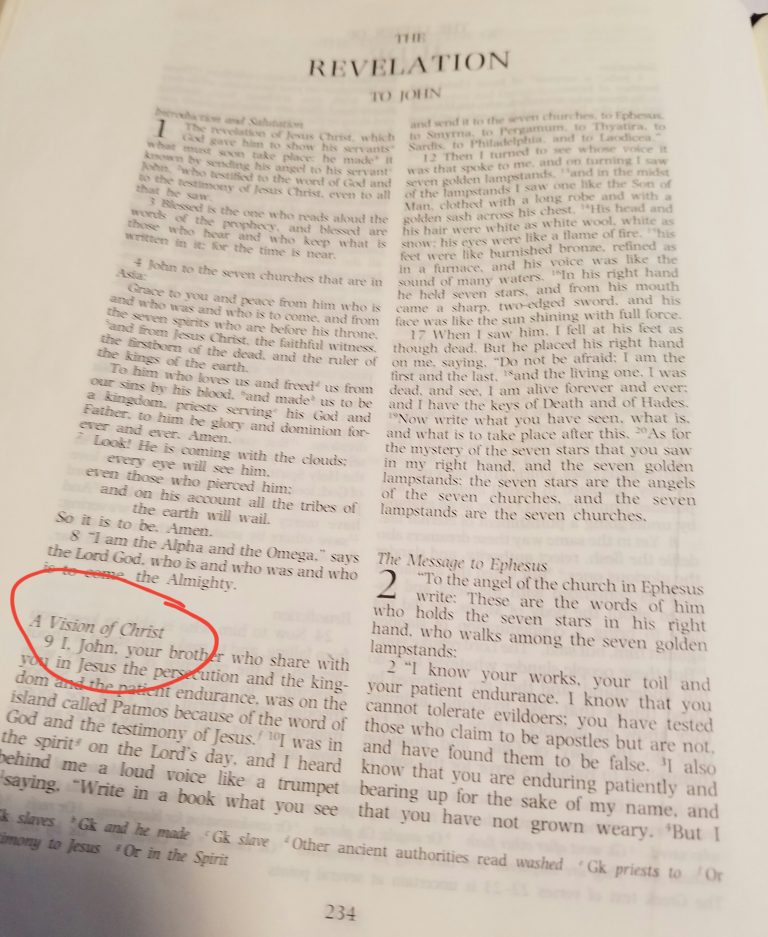Lingamish on “Seed-Pickers”
Lingamish has a post on a preaching peeve of his–seed pickers. You’ll have to go to his post to see all the details, but he defines a seed-picker as:
A seed-picker is a preacher who grabs verses from all over the Bible and slaps them together in a puking pastiche of public preaching. A seed-picking sermon is marked by wide jumps in topic and involves so much thumbing through the Bible that even the most ardent Berean finally loses heart and has to just take the preacher’s word for it when he says Ezekiel 44 says such and such and Revelation 12 says so and so.
We’ve all heard such sermons, I’m sure, though in many Methodist sermons these days the scriptures are more likely to be few and far between. Nonetheless, Lingamish makes a good point, to which I’d like to add a couple of comments.
The key isn’t how many scriptures you use, it’s how appropriate they are and how well chosen. As Lingamish notes, many people like to remind us that “. . . they all [Bible books] ultimately have the same Author (notice the big A).” At the same time, it is worthwhile for us to remember that the Bible is presented to us the way it is, in many portions and at various times (Hebrews 1:1), precisely because that uppercase ‘A’ Author chose to provide it to us in that fashion. When we randomly connect pieces from one scripture with another, we deny the very providence of God which provided the Bible to us as it is.
There are valid reasons for connecting scripture with scripture, for example:
- One scripture is quoted in another scripture, as in many New Testament quotations of the Hebrew scriptures. But beware here and check carefully just how that scripture is quoted and for what purpose.
- Another scripture provides the background, for example passages in Kings or Chronicles as an historical background to certain prophetic works
- Two scriptures apply the same principle in different circumstances, thus allowing us to see the principle more clearly.
- Literary allusions or use of symbols are used in more than one scripture and one usage can enlighten the other.
- Two scriptures describe the same event such as in the birth stories of Matthew and Luke, the Passion stories of all four gospels, many parables and miracle stories in the synoptic gospels, and Samuel-Kings compared to Chronicles.
(For more ideas see my previous post, Comparing Scripture with Scripture.)
The basic idea that Lingamish expressed, however, is generally quite sound. Use of a large number of texts is a fairly good indicator that one is not being careful to use simply those texts that are appropriate. The reason is that it takes time to explain the connections and make use of the value of each scriptural element that one is using in a sermon or scripture lesson.
Often the “seed-picking” type of sermon is presented to “the faithful congregation,” those who already agree, and the verses used are a kind of code verses. What I mean by “code verses” is certain proof texts that a congregation is trained to know prove a certain point. Often when examined they do no such thing, but that won’t matter to the already convinced congregation. They hear the reference and they know what they’re supposed to believe, so obediently they do so.
I recall one such text in favor of the idea that water baptism is a requirement for salvation. Acts 2:38 reads:
Peter said to them, “Repent, and be baptized every one of you in the name of Jesus Christ so that your sins may be forgiven; and you will receive the gift of the Holy Spirit.
Now some people have trained themselves to just know that this text means that one must be baptized in water or else one will not be saved. But the text does not, in fact, say anything of the sort. It instructs a certain group of people to repent and be baptized so their sins will be forgiven. It doesn’t say that everyone who fails to be baptized will be lost. It doesn’t mention water at all. Very simply it doesn’t exclude the idea that water baptism may be a requirement for salvation, but it doesn’t say it is a requirement either. But a congregation that already believes in that requirement and that is trained to accept Acts 2:38 as a proof text of that will nonetheless respond with an Amen! The outside who is looking in may be puzzled, but they know.
Preachers would do well to consider both insiders and outsiders in planning their sermon and plan to explicitly connect texts together for good reason. You may cover a lot of scriptural ground, but your congregation will benefit from being shown the nuts and bolts along the way.


Henry, lots of good ideas in this post. Thanks for the plug.